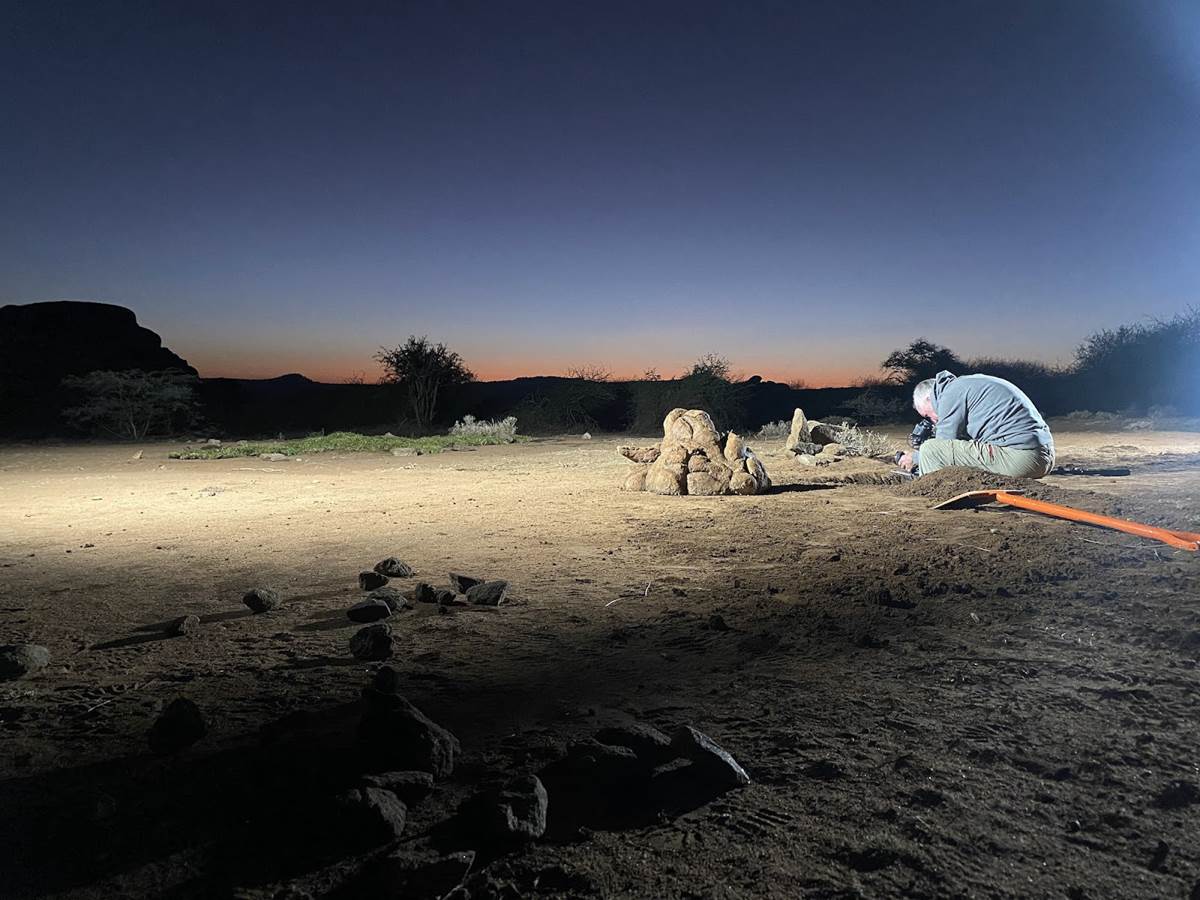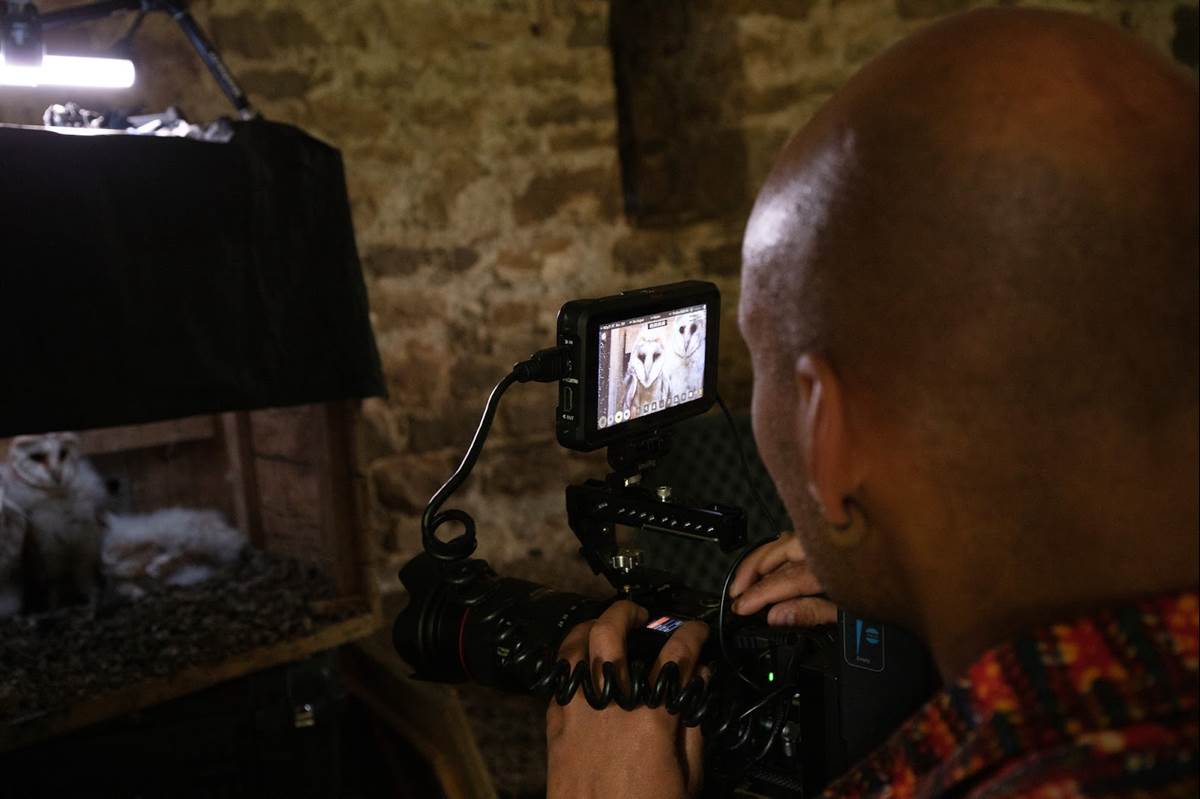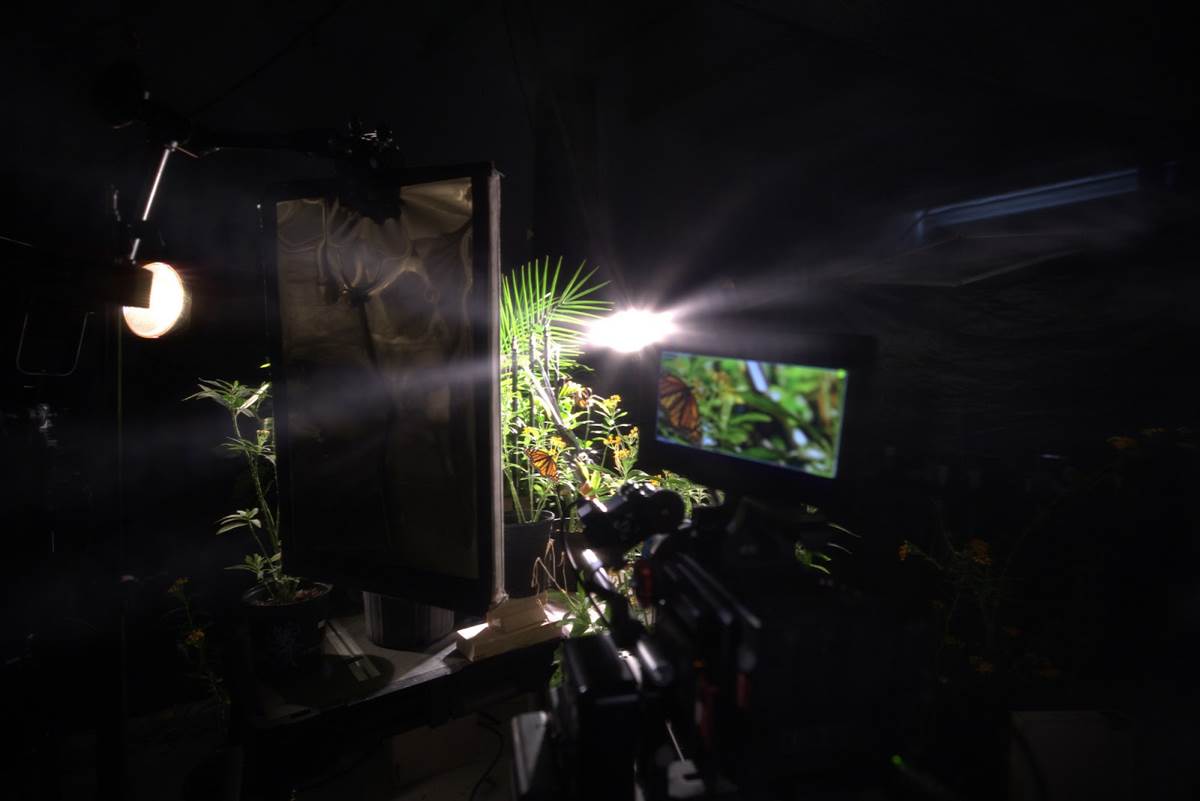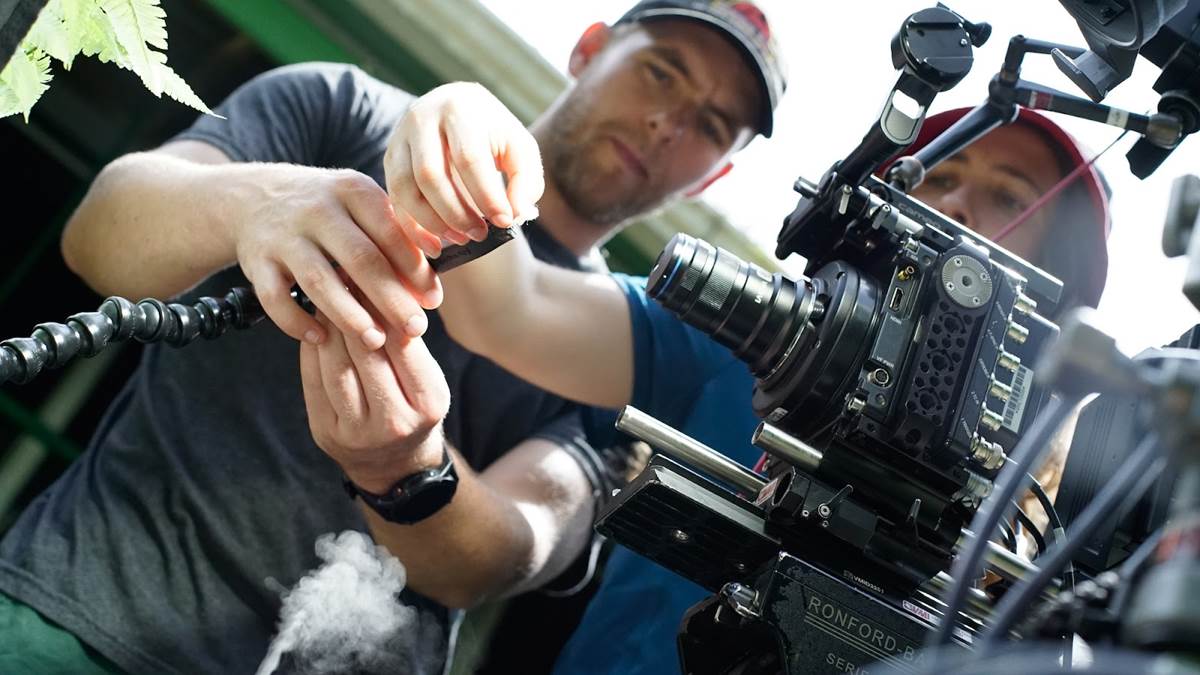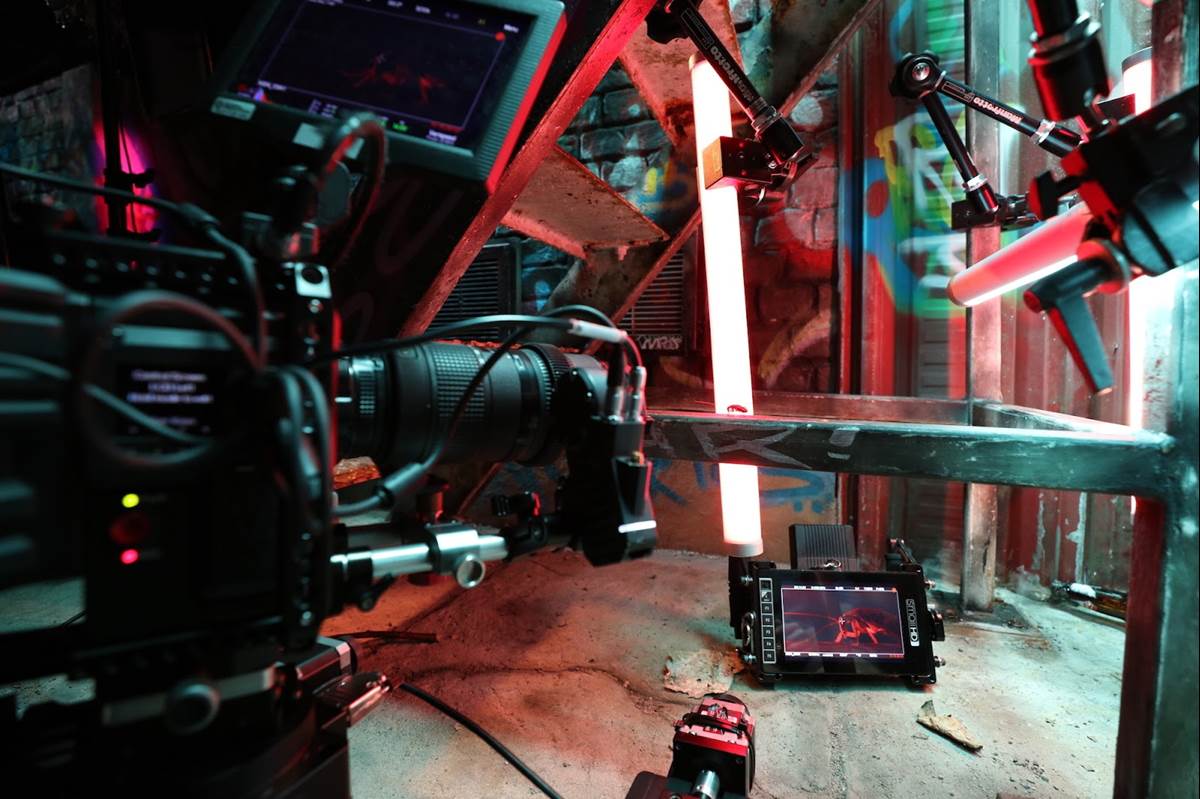On Wednesday, January 24th, National Geographic shrinks viewers down to the size of an ant for a real “epic of miniature proportions” with A Real Bug’s Life. Inspired by Pixar’s classic film, the series looks at the real lives of these tiny heroes. Featuring jaw-dropping footage and comedic narration by Awkwafina, I got to speak with series producer Bill Markham and director of photography Nathan Small about how this series came together.
Alex: Congratulations on the launch of A Real Bug’s Life. I really enjoyed the series. I was curious to know what came first, the idea to do a a deep dive into the world of bugs or a concept inspired by Pixar’s a bug’s life.
Bill Markham: there was a rumor that a bug’s life 2 was going to come out, and some bright spark in our production company in Bristol said, “You know what, we should do A Real Bug’s Life.” And so that's when we got in contact with National Geographic. And it turned out that that film never happened. Maybe it is happening, I don't know. But by then, we were up and running and thinking, how would Pixar make a film about bugs? How are we going to make bugs entertaining? How are we going to get families to watch shows about bugs, and realize how important they are, fall in love with them? And so this concept grew and grew and turned into what we have now, which is a rather extraordinary, weird, really fun, kind of quirky look at this totally overlooked group of animals. I think 90% of all the species on Earth are bugs, and most people just totally overlook them, and sometimes don't even like them. So we needed people to fall in love with them, and this is how we did it.
Alex: I'm used to a Nat Geo documentary being set very far away from mankind. In this one, we've got a whole episode set in New York City where there are bugs I didn't know live there. How did you determine which biomes you would go to for the episodes?
Nathan Small: We've tried to give the audience a nice, wide selection of different biomes. We've got jungles, we've got cities, we've got a farm, we've got a beach, and that's enabled us to show a real smörgåsbord of bugs and to delve into all of the different challenges that these particular environments conjure up for our little heroes, and then the ways in which they're able to overcome these challenges and hopefully triumph.
Bill Markham: And each habitat has a very different theme. So the first episode is about finding a home. we can all relate to going to a big city and getting lost and needing to find how to get around. The second episode, which is in the in rainforests, it's about two bugs starting their first day at work and how they work out what to do. No one's teaching them, so they've got to follow the other bugs, or they've got to follow their nose. And then there's another episode about bringing up a family. The farm episode, which Nathan directed, is about a queen bee who wants to bring up her royal family. and so on. We tackle all aspects of a bug's life in all these different environments, and we hope that by the end of the series, people can really understand these creatures better.
Alex: The series is narrated by comedic actress Awkwafina, who adults will recognize from her role in films like Crazy Rich Asians and Quiz Lady, and whose voice is unmistakable to kids who love Raya and the Last Dragon and Migration. Was the script tailored to her casting, or did she have the chance to do much improv? She’s hilarious here, particularly in the farm episode when she describes how aphids are born pregnant, so they’re instant grandmothers.
Bill Markham: She was approached and chosen very early on, and all of the scriptwriting was with her in mind. Nathan wrote the script for the farm episode and can talk about that a bit more, but we definitely gave her space in the record to react. And she kind of inhabits this strange space between being the narrator, sometimes she's a bug, sometimes she's almost the audience, and it's a bit unusual, I think. She's reacting to things, she's sometimes talking like a bug.
Nathan Small: We definitely wrote for her, and we knew very early on that she was going to be our narrator. That massively impacted our scripts and the types of things that we knew that we could get away with.
Alex: The imagery you capture is so incredible. You guys make a microscopic world look human-sized at times. What types of cameras were you using to capture this amazing footage?
Nathan Small: The cameras are less important than the lenses that we're using. We're using all of these amazing macro lenses that have come out over the last few years that are incredibly bright, incredibly sharp, and enable you to get very close to things and blow them up massively.
Bill Markham: Some of them are called probe lenses, which are these long and you can get them right down into the action. They've got little 45-degree angles so you can be down looking up at an ant that's only a tenth of an inch long, let alone high. By being on that animal's eye line you're able to to really feel for it and understand what's going on. Those lenses are incredible and the lighting is another thing, isn't it?
Nathan Small: Yeah. There's been big advances in lighting technology recently, as well with all these new LED lights, which means that we're able to get lights and they're very small and very powerful, so we're able to light things like you would on a drama set and give people that high-quality cinematic experience, but on a teeny tiny scale.
Bill Markham: It really amazed me, what you were saying about the motion control and the remote control as well.
Nathan Small: Oh yeah, that's the other thing. If you're trying to control a camera, make it move around the head of an ant, that's very hard to do manually. So we had to design and build all of these custom robots that the camera sits on. We're controlling everything with PlayStation controllers remotely, so we're never touching the camera. Well, sometimes we do, but very rarely are we actually touching the camera. We're doing it all remotely, watching the action on a live screen and controlling the camera that way. So that means we can get very precise, very smooth, and hopefully, cinematic types of shots that you would expect to see in high-production dramas.
Alex: Speaking of cinematic, in the New York episode, there's basically a Sam Raimi Spider-Man shot on the side of a building with two spiders fighting, and we're inverted. How was that shot achieved?
Bill Markham: You’ll have to watch the behind-the-scenes episode when it comes out because that actual shot is in there.
Nathan Small: I wasn't on that shoot, but they basically hung a camera off the side of a building. It was very high on the top floor with a crane, and they hung the camera over the side, mounted upside down.
Bill Markham: We worked with a spider expert who was able to make sure we were in the right place, the bug was in the right place, and we could get those incredible shots. We always had entomologists on location with us making sure that what we were filming was safe for the animals and also accurate.
Alex: On that note, did you have to do anything specific to prevent the bugs from reacting to the presence of cameras? For example, in one episode, you showcase how honey bees enter hive defense mode when they sense CO2 nearby.
Bill Markham: There was an interesting thing. It’s in the making of episode, which comes out later in 2024, but in the jungles episode there's a story about these little orchid bees. They're less than an inch long and green in a massive green Jungle. How on Earth do you track them down and follow them? Actually, there's an incredible trick with those animals because they're the only animals on the planet, apart from humans, that concoct a perfume. They gather all the ingredients and each male orchid bee creates a unique perfume with which to attract the females. It’s quite a relatable story. Rather than chasing them through the jungle and falling over and never finding them, the way to attract them to you is actually to put out some of the ingredients that they really like. So, if you've got a little pipet of eucalyptus oil or whatever, you pop that on the branch, and they'll come to you. In the making of you, can see the scientist [place some] and it arrives within seconds. Then you can film it doing its natural thing. But getting the bugs to come to you, and also giving them something in exchange for their filming, they get a little perfume, which all the girls will come running to, so it's a win-win situation and really amazing.
Alex: Are there any computer-generated shots in this? There’s a scene in the New York episode that reminded me of something out of Pixar’s Ratatouille, where the camera follows bugs into crawlspaces and out into a very narrow alley filled with pipes.
Bill Markham: I think it's all real. I mean, there's probably a cut between the outside and the inside. The only computer generation, I think, is that there was a fly flying through New York, and it would be impossible to follow that unless it was placed in the shot. There was a little bit of digital enhancement, but really, it's real bugs doing real things. Some people can't believe that bugs look like that, but it's because they've never looked at them this close before.
Alex: Getting this close to these tiny creatures reveals some really cool facts about them, like weighted anchors on a fly that it uses to help steer. Was there anything you learned in this process that surprised you?
Bill Markham: The orchid bee is one of the most amazing stories, but weirdly, I knew that one before. Nathan filmed this bee colony, bumblebees in a farm in England. We see bumblebees all the time. We know they pollinate stuff, and then we don't really think about them much more. But the fact that this queen, she's bringing up the next generation, but for the first half of the year, she doesn't want any more queens to challenge her for the crown, so she releases a pheromone into that nest to suppress the development of these young females. So they're growing up, but they're never going to be a queen. They're just going to be worker bees, and they're going to work for her, and they're going to work to make the colony bigger. At just the right time, she's going to stop producing that pheromone, and those ones who are just growing will turn into queens, but by then, she's had enough. She's ready to die. Nathan filmed an incredible bee funeral where the worker bees carry the dead queen away from the nest but leave behind the next generation of queens who are now ready to take over not just that throne but all the thrones in the surrounding countryside. That’s remarkable, complicated, and controlling. We didn't find that out, that's something that generations of entomologists have worked on and discovered. We're very lucky that these people have dedicated their lives to finding out bizarre and extraordinary things like this. For me, to have such a familiar animal doing such an extraordinary thing is really mind-blowing.
Nathan Small: I didn't know that jumping spiders dreamt before this show. We found this out quite early in the production. And then we're like, okay, this is cool, how can we show this? What amazing sequence can we do now to illustrate this so that everyone else finds this as cool as we do? That's the exciting thing about his show and the creative license that you have to give people really fascinating science in a fun, cool, and accessible way.
Alex: You definitely did that. For a closing question, what do you hope viewers take away from A Real Bug’s Life when they stream it on Disney+?
Bill Markham: I discovered a horrifying fact whilst we were making the series, which is that in the last 20 years, 60% of Britain's bugs have disappeared. When I was a kid, you'd drive along, and you'd have bugs on the windscreen, which you'd have to get rid of, or on the number plate. You could tell where someone had been because of the number of bugs. That doesn't happen anymore. It's tragic, but it's also terrifying. Bugs are at the bottom of the food chain. They feed all the birds and the mammals, and they pollinate all our plants, a lot of our fruit. I didn't realize they import something like 100,000 bumblebee nests into one English county every summer to pollinate the tomato plants. This is crazy. It's not unique to England. There are studies in Germany, there are studies all over the world showing that bugs are in serious decline. If we lose the bugs, things are going to change not in a good way. That story isn't told exactly in the shows, but it's mentioned in the final episode. What I hope is that families will get to understand bugs. They won't be put off by bugs. They'll look into their lives. They'll take an interest. They might fall in love with them. And once they fall in love with them and take an interest, then they'll care about them and maybe protect them. We need that. We need the next generation to do that because our generation has failed, unfortunately.
Nathan Small: For people to want to save things, they need to care about them. It's our job to try and give the viewers an insight into these amazing creatures that lead complicated, beautiful, fascinating lives. As complicated, beautiful, and fascinating as any of the bigger, more commonly covered charismatic animals. If we can get young people excited about bugs, then that would be a big win for us.
All 5 episodes of A Real Bug’s Life begin streaming exclusively on Disney+ beginning Wednesday, January 24th. A bonus episode that goes behind-the-scenes is expected to join them at a later date.

